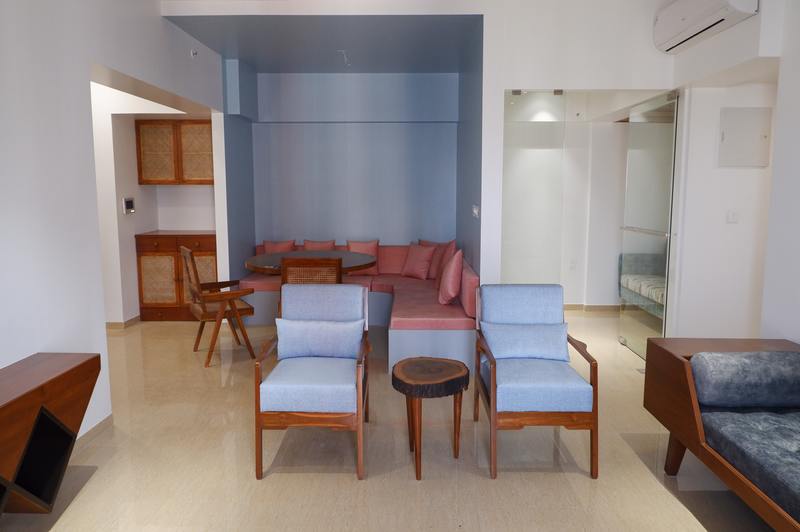With the heightened popularity of DIY tutorials, you must have seen a couple of them lately with topics such as “how to add a cushion to a wooden chair”. There’s just so much you can learn just by being on the web for a couple of minutes. It’s fantastic how you can see all sorts of topics out there — from carpentry, gardening, and even upholstery you can do at home.
The upholstery used to be reserved for shops that have completed a wide array of tools, machines, and equipment. After all, it’s a business working with furniture and vehicles. However, with the widespread invention of miniaturized instruments and the relative increase in the number of people selling them, it’s easy to start working with them.

Steps In Adding Cushion To Wooden Chair
Current market trends commonly separate cushioned furniture from plain ones. This is very noticeable if you’ve noticed it in malls and specific shops. There is usually a section reserved for sofas and the like and another section for sets of wooden or alloyed ones.
Another popular idea right now is bringing old, plain, and unused household materials back to life. This is done by adding new parts and redesigning. For example, if you have a wooden chair at home that you want to revive, here are our steps for attaching cushions into it:
Step #1. Pick up enough cushioning and other necessary materials
Before you can start on the project, you’re going to need to have some measurements and dimensions in hand. We recommend that you create and focus on a single chair first. This is, of course, applicable only if you’re working with a chair that comes as a set, like a dining set.
Using a measuring device (like a ruler or tape measure), measure the size of the seat of your chair. What we mean by size is the length and width of the seat surface, the length and width of the sides of the seat (apron), and your desired height from the added cushion. The seat is the surface you sit on, and you must note that the height resulting from the cushion will directly reflect the amount of foam you’ll need to add.
You can also add a cushion on the back of the chair, but let’s leave that to later. Write down your dimensions and buy some cushioning material.
You’re going to want to purchase enough with some extra, just in case you make a mistake later on. Other stuff you’re going to need is fabric, buttons, tucker, and some fabric glue.
Step #2. Measure up the cushion material and cut
After you’ve obtained the materials, you can start with the job. First, make sure you use a large sharp scissor when cutting the foam. Don’t worry if it’s not too straight but avoid allowing your scissor to cut too much of the foam that it ends up shorter than the seat.
You also need to measure and cut some foam for the apron of the chair. Just follow the initial measurements you made but make sure you include the chair’s legs before you cut them. Correctly cutting the foam will give you a beautifully shaped cushion, later on, making sure you use guide lines on the foam.
Step #3. Glue the foam cushion into the chair surfaces
Place some fabric adhesive on all the surfaces that you’re planning to put foam on. We recommend using a minimal amount of adhesive since it will only make sure that the foam doesn’t move around when you cover it later. Spread the glue evenly and make sure there are no lumps formed.
Ensure that no one sits or messes with the chair you’re working on until the adhesive dries up. This and too much glue can cause the glue to seep into the foam and deform it. You wouldn’t want a chair that doesn’t look plump enough, right?
Step #4. Measure some fabric for the covering
There are all sorts of fabrics you can use for your refurbished chair. Most people like leather, but anything you like will work as long as the material is sturdy enough for wear and tear. You’re going to cover all the foam you’ve just pasted, so while you’re waiting for it to dry, check that you have enough fabric.
To find the fabric size, add the dimensions of the seat surface and aprons. Then, add some extra inches there, so you have enough for stapling later on. Notice that the chair needs only a single piece of fabric if you’re only working with the seat.
Step #5. Cover the cushions and tuck them
After the glue dries, cover the foam with your fabric. Fold it on the corners, bring the extras to the bottom, and tuck it there with staples. You can apply the buttons on the seat cushion surface for design.
Conclusion
There is no easier way to know how to add a cushion to a wooden chair, so we’ve presented it as simply as we can. It’s really going to take some patience and even strength to finish a single project. It’s absolutely worth it, though, when you see a glimpse of the finished majestic chair.
